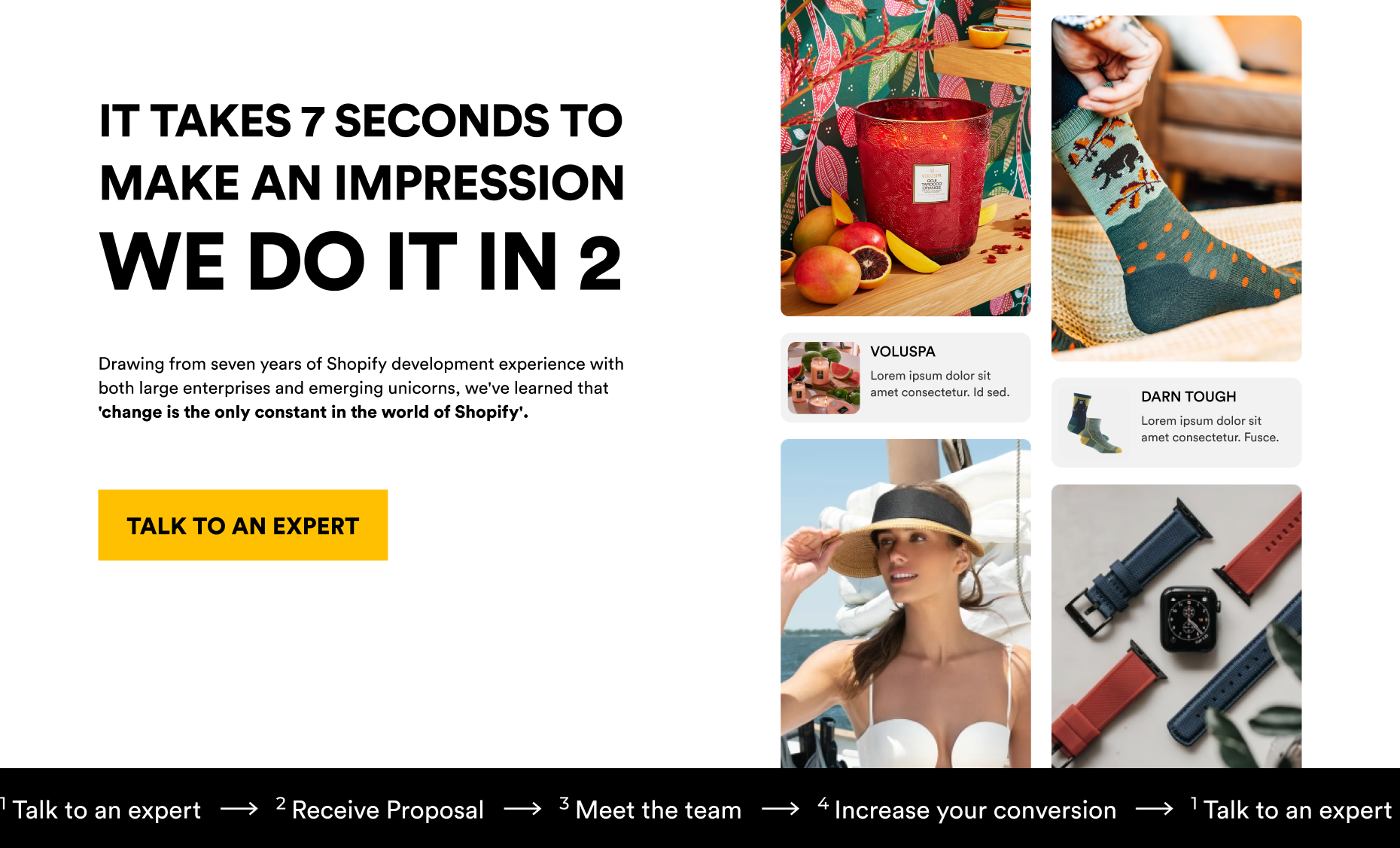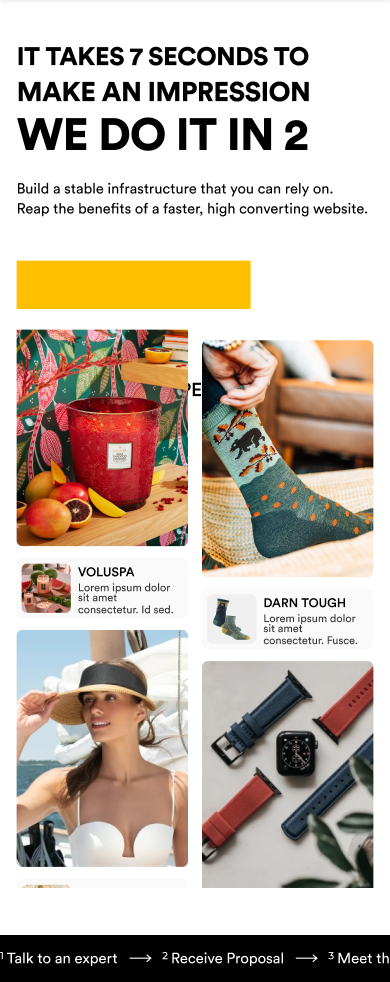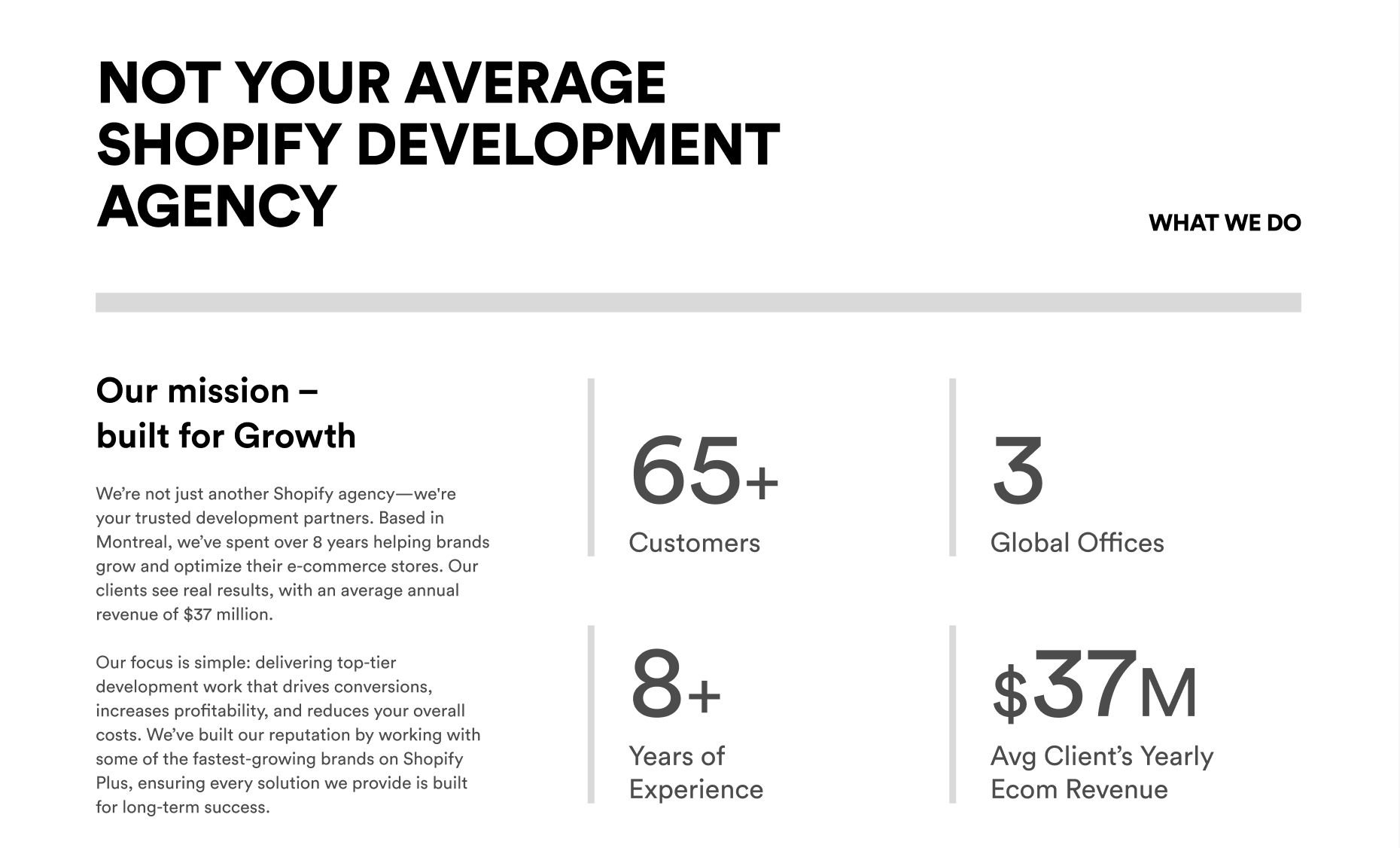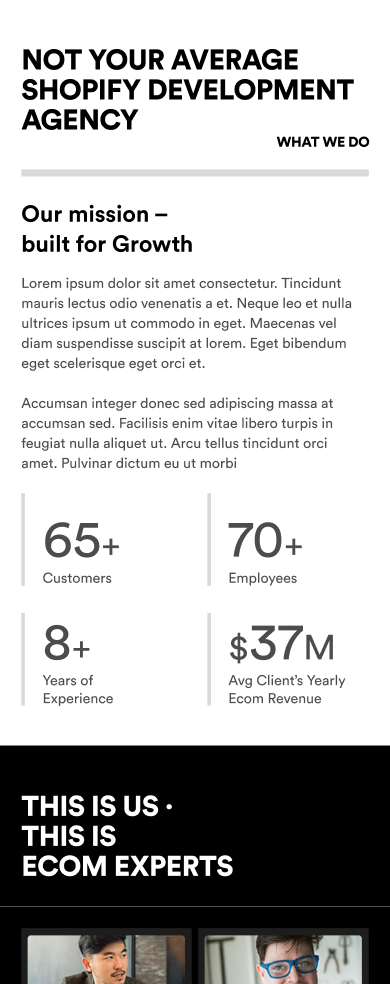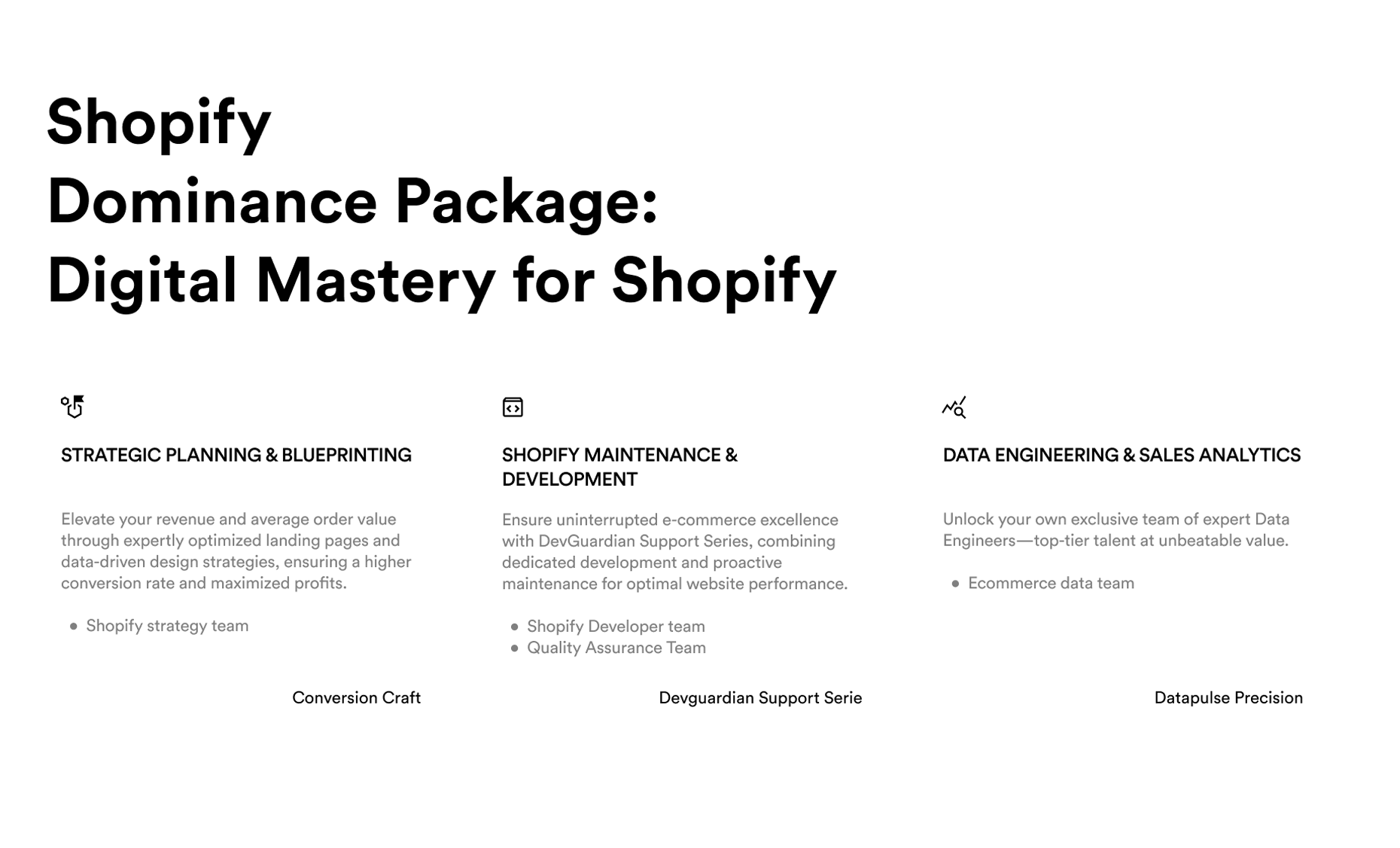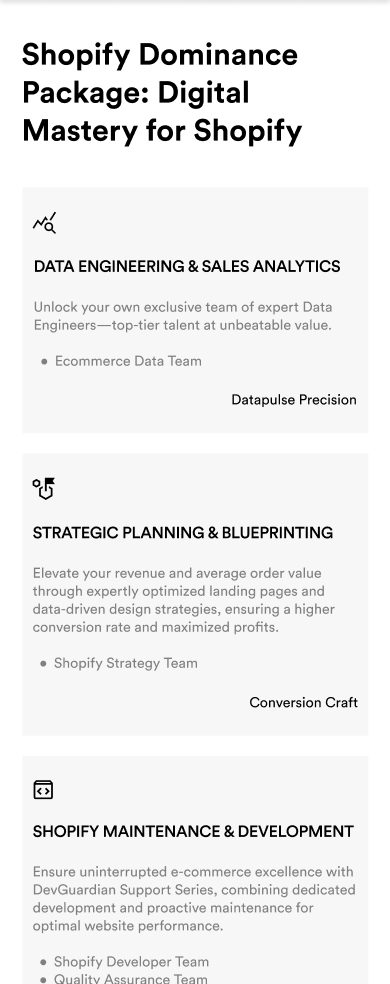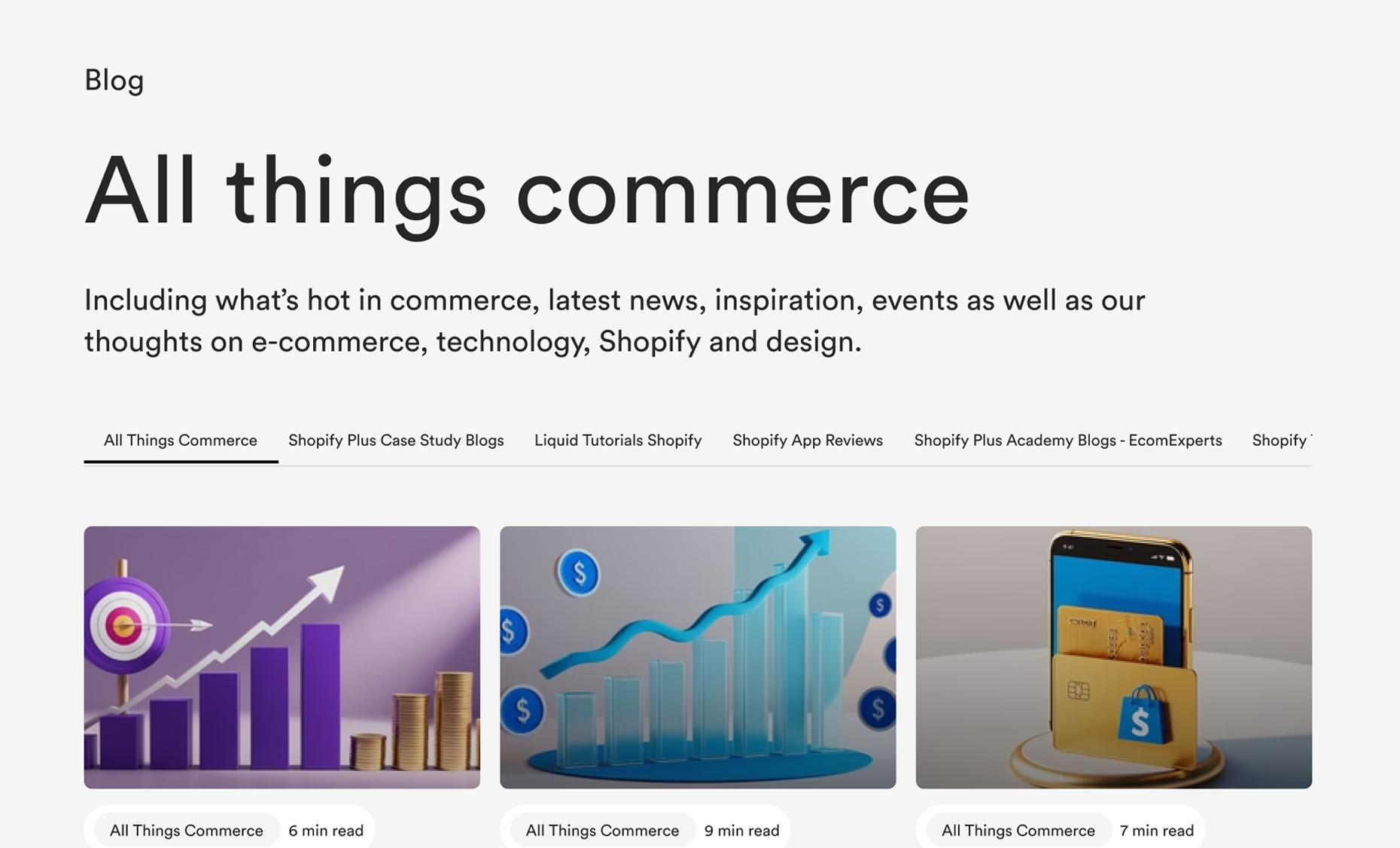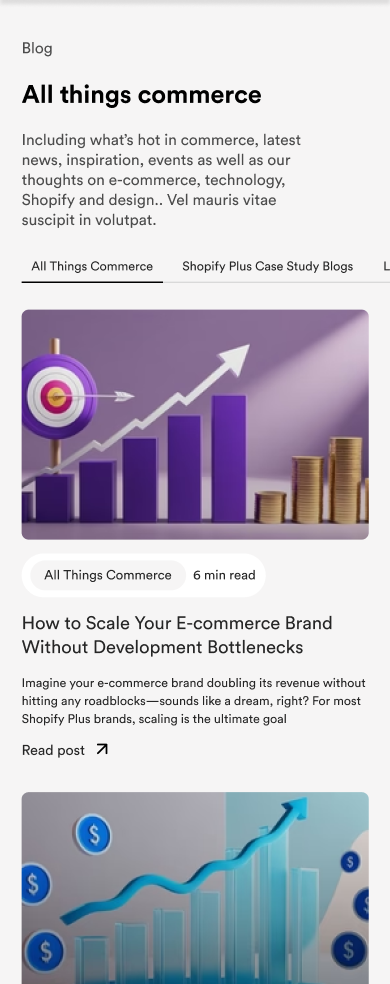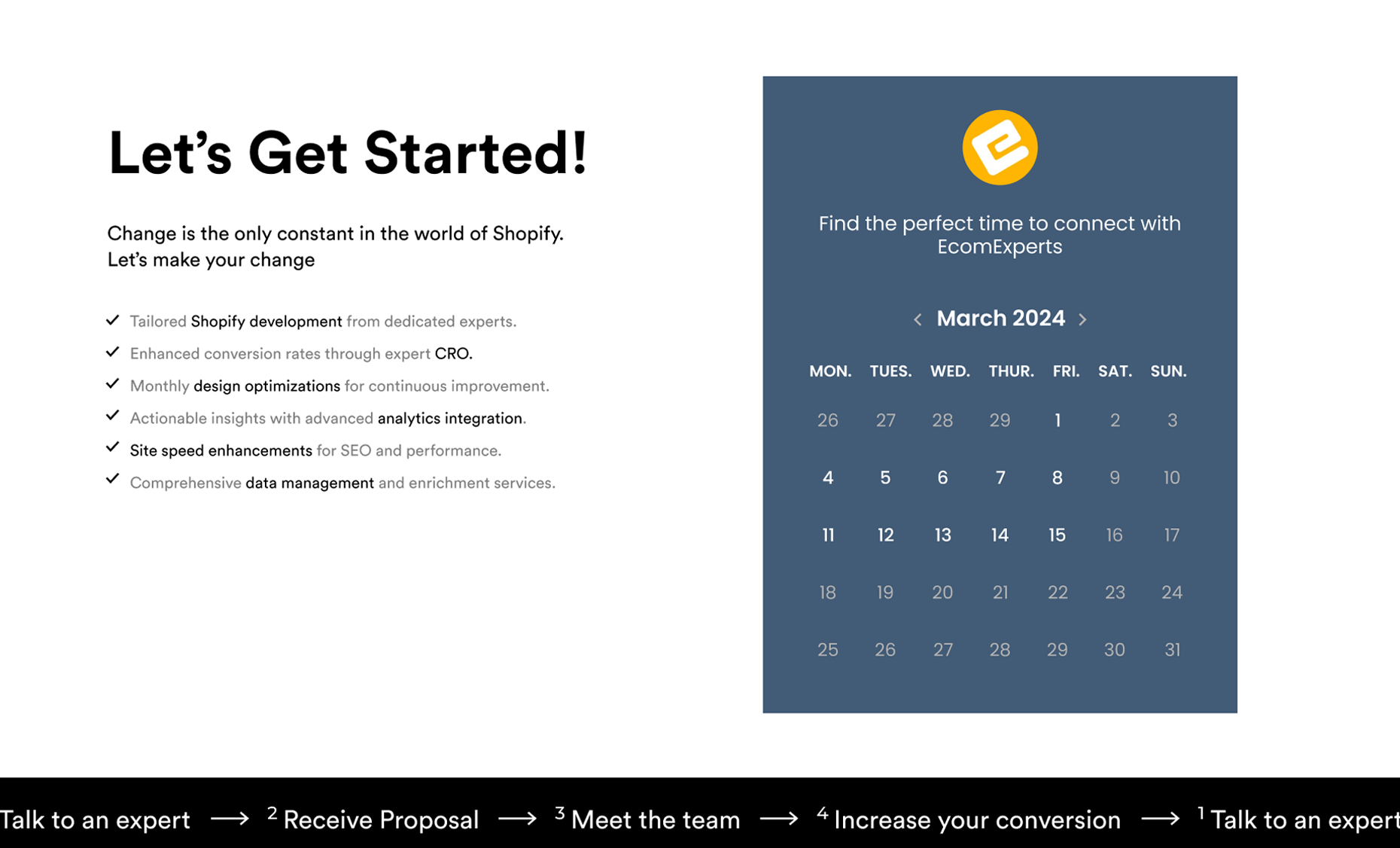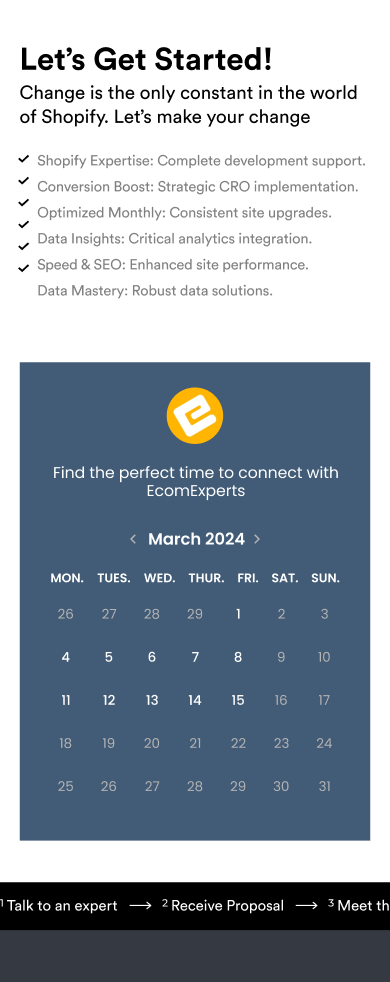Every e-commerce store has untapped potential hiding in plain sight: the customer who’s already decided to buy. They’ve browsed, added something to their cart, and are moments away from checking out.
The question is—are you making the most of that moment? This isn’t about pushing harder; it’s about offering smarter.
Understanding the Value of Cross-Selling and Upselling in E-commerce
Strategies like cross-selling and upselling aren’t just tactics—they’re opportunities to enhance the shopping experience while increasing your Average Order Value (AOV).
Whether it’s suggesting the perfect add-on or highlighting a premium version of what they’re buying, these subtle techniques can turn a single sale into something far more profitable.
The trick? Knowing the difference between the two and when to use them. Cross-selling works when your customer needs something complementary, like a laptop sleeve with their new MacBook. Upselling, on the other hand, steps in when they’re on the fence about settling for the basic version of what they want.
In this blog, we’ll dissect both strategies, show you how to implement them effectively and share actionable tips to help you increase AOV without overwhelming your customers. If you’re ready to boost sales while keeping customers happy, let’s get started.
Understanding Average Order Value (AOV)
To fully appreciate the power of cross-selling and upselling, you first need to understand Average Order Value (AOV)—one of the most crucial metrics in e-commerce.
What is Average Order Value (AOV)?
Average Order Value is a measure of how much customers spend, on average, every time they place an order in your store. It’s calculated using a simple formula:
AOV = Total Revenue ÷ Number of Orders
For example, if your store generates $50,000 in revenue from 1,000 orders in a month, your AOV is $50.
Why Average Order Value (AOV) Matters?
A high AOV doesn’t just look good on a spreadsheet—it directly impacts your business’s profitability. Here’s why:
- Maximizing Marketing ROI: Acquiring new customers is expensive. By increasing AOV, you generate more revenue from each existing customer, making your marketing spend work harder.
- Improving Profit Margins: With higher AOV, the costs of processing an order (like shipping and packaging) become a smaller percentage of the total revenue per sale.
- Driving Long-Term Growth: Higher AOV boosts cash flow, giving you more resources to reinvest in inventory, marketing, or new customer acquisition strategies.
How Cross-Selling and Upselling Influence AOV
This is where cross-selling and upselling shine. By encouraging customers to add more to their carts or upgrade their purchases, these strategies directly increase the value of each order.
Imagine:
- A customer buying a camera adds a lens cleaning kit (cross-sell), bumping their $500 order to $540.
- Another customer upgrades from the standard camera model to a premium version with extra features (upsell), raising their $500 order to $750.
Both strategies are simple, effective ways to elevate AOV without needing to bring in additional customers.
With a clear understanding of AOV and why it’s essential, let’s dive into what makes cross-selling and upselling unique—and how to use them effectively.
What is Cross-Selling?
Cross-selling is one of the simplest yet most effective strategies for increasing Average Order Value (AOV). It’s all about offering customers complementary products that enhance their primary purchase. Think of it as giving your customers everything they need in one go.
How Cross-Selling Works
At its core, cross-selling is about relevance. It works by presenting products that pair naturally with what the customer is already buying. The key is to offer suggestions that genuinely add value to their purchase.
Examples of Cross-Selling in Action:
- E-commerce: A customer buying a smartphone is shown accessories like cases, screen protectors, or wireless chargers.
- Retail: When someone orders a coffee machine, they’re offered premium coffee pods or cleaning solutions.
- Fashion: A shopper adding a dress to their cart is recommended to matching shoes or a handbag.
The Benefits of Cross-Selling
Why should you prioritize cross-selling? Here’s what it can do for your business:
- Boosts Revenue Without Additional Costs: Cross-selling encourages customers to spend more without requiring extra investment in acquiring new traffic.
- Improves Customer Satisfaction: When done right, cross-selling helps customers discover products they didn’t know they needed, making their shopping experience more convenient.
- Strengthens Brand Perception: Offering relevant product recommendations shows customers that you understand their needs, fostering trust and loyalty.
Best Practices for Effective Cross-Selling
To make cross-selling work for your store, it’s important to be strategic. Here’s how to get it right:
- Keep Recommendations Relevant: Suggest products that complement the customer’s purchase. Irrelevant recommendations can frustrate shoppers and hurt conversions.
- Be Subtle: Cross-selling should feel helpful, not pushy. Use phrasing like “You might also like” or “Customers who bought this also purchased.”
-
Choose the Right Timing
Present cross-sell items where they’ll have the most impact—on product pages, in the cart, or during checkout. - Limit the Options: Too many choices can overwhelm customers. Stick to a few highly relevant suggestions.
Cross-selling in the E-commerce Funnel
Cross-selling can happen at various stages of the shopping journey, but some moments work better than others:
- Product Pages: Show complementary items the customer might find useful.
- Cart Pages: Highlight add-ons that align with the products already in the cart.
- Post-Purchase Emails: Suggest related products based on what the customer just bought.
What is Upselling?
If cross-selling is about adding complementary products to a purchase, upselling takes a different approach. It’s about encouraging customers to upgrade—helping them see the value in choosing a higher-tier product, a premium version, or an add-on that enhances their original choice.
How Upselling Works
Upselling focuses on improving the customer’s purchase by offering something better, bigger, or more feature-rich. The goal is to increase the customer’s spend while ensuring they feel like they’re getting better value.
Examples of Upselling in Action:
- E-commerce: A customer shopping for headphones is shown the premium version with noise-canceling features.
- Tech Products: While purchasing a laptop, the customer is encouraged to upgrade to a model with more storage or better performance.
- Hospitality: When booking a hotel room, customers are offered an upgraded suite with added amenities.
The Benefits of Upselling
When done correctly, upselling can be one of the most effective ways to boost Average Order Value (AOV) while improving the customer experience. Here’s how:
- Higher Profit Margins: Premium products often have better margins, so every upsell directly contributes to your bottom line.
- Improved Customer Satisfaction: Upselling highlights features or benefits the customer might not have considered, helping them make a more informed and satisfying choice.
- Strengthens Brand Perception: Offering higher-quality or premium options positions your brand as a provider of superior value and solutions.
Best Practices for Effective Upselling
To upsell successfully without overwhelming or alienating customers, follow these tried-and-true practices:
- Highlight Clear Value: Explain why the upgrade is worth it. Focus on the tangible benefits the customer will gain, such as better features, more durability, or additional perks.
- Keep It Reasonable: The price difference between the original item and the upsell should feel justifiable and within reach. For example, a 10–20% increase in price is more effective than a drastic jump.
- Personalize the Offer: Use customer data or behavior to suggest upsells that are relevant to their preferences or needs.
- Be Transparent: Communicate what’s included in the upgrade to avoid confusion or disappointment later.
Where Upselling Works Best
Upselling is most effective when presented at key moments in the shopping journey:
- Product Pages: Offer the premium version as an alternative with a “Compare” feature.
- Cart Pages: Suggest upgrades or add-ons that elevate the customer’s experience.
- Checkout Pages: Highlight low-cost add-ons, like extended warranties or extra features.
Upselling vs. Pushing
The key to upselling is subtlety. Customers shouldn’t feel pressured into spending more—they should see the upsell as a logical and beneficial choice. Presenting it as an option, not an obligation, ensures they remain in control of their decision.
Cross-Selling vs. Upselling: Key Differences
While cross-selling and upselling are both powerful strategies for increasing Average Order Value (AOV), they serve distinct purposes and work in different ways. Understanding their differences is crucial to knowing when to use each strategy.
1. The Focus
-
Cross-Selling: Encourages customers to purchase complementary items in addition to their main product. It’s about expanding the purchase.
- Example: Recommending a phone case to someone buying a smartphone.
-
Upselling: Aims to upgrade the customer’s current choice to a higher-tier version or product. It’s about enhancing the purchase.
- Example: Suggesting a premium smartphone model with better features.
2. Customer Need Addressed
-
Cross-Selling: Meets multiple needs by offering additional products that complement the customer’s initial choice.
- Think: “What else would make their purchase complete?”
-
Upselling: Focuses on improving the customer’s primary need by providing a better version of their selected product.
- Think: “How can we deliver more value in the same product?”
3. Impact on the Buying Decision
-
Cross-Selling: Expands the shopping cart by increasing the number of items purchased.
- Example: A customer adds a camera cleaning kit to their camera purchase.
-
Upselling: Elevates the value of the purchase by increasing the quality or features of the product.
- Example: A customer upgrades to a DSLR camera instead of a standard point-and-shoot.
4. When to Use Each Strategy
-
Cross-Selling Works Best When:
- You have complementary products that pair naturally with the main item.
- Customers are in the cart or checkout phase and may want to “complete” their purchase.
-
Upselling Works Best When:
- The upgraded product offers clear and compelling benefits over the original option.
- Customers are still exploring product details and weighing their options.
5. Visual Comparison Table
| Aspect | Cross-Selling | Upselling |
|---|---|---|
| Focus | Additional products | Upgraded product |
| Goal | Expanding the purchase | Enhancing the purchase |
| Best Use Case | Offering complimentary items | Highlighting premium alternatives |
| Example | Adding a laptop sleeve to a laptop | Upgrading to a laptop with more storage |
This table summarizes the core differences between cross-selling and upselling. Here’s what you need to know:
- Focus: Cross-selling is about additional products that work alongside the main purchase, while upselling is about presenting a better, upgraded version of the same product.
- Goal: Cross-selling broadens the purchase by encouraging customers to buy more items, whereas upselling increases the value of a single item.
- Best Use Case: Cross-selling works when there are natural complements to the product (e.g., a phone and a case), and upselling is ideal when the upgraded product offers clear, tangible benefits (e.g., more storage, and better features).
- Example: Cross-selling focuses on completing the customer’s experience with related items while upselling focuses on improving the experience with the same product category.
Why Not Both?
Cross-selling and upselling aren’t mutually exclusive. Combining them can be a game-changer for your AOV. For example:
A customer buying a laptop could be upsold to a model with more storage and cross-sold accessories like a laptop bag or wireless mouse.
The key is to balance these strategies to avoid overwhelming your customers while ensuring they see genuine value in your suggestions.
When to Use Cross-Selling vs. Upselling
Both cross-selling and upselling have their place in your e-commerce strategy, but knowing when to use each is what makes these techniques effective. The key lies in understanding your customer’s journey and presenting the right offer at the right time.
1. When to Use Cross-Selling
Cross-selling works best when you want to:
-
Offer a Complete Experience:
Customers buying a primary product may also need complementary items to get the most out of their purchase. Cross-selling ensures they leave your store fully equipped.- Example: A customer buying a fitness tracker is shown workout bands or a water bottle.
-
Increase Cart Value at Checkout:
Highlight small, affordable add-ons that enhance the purchase without significantly increasing the cost.- Example: Adding memory cards or camera accessories for someone buying a DSLR.
-
Encourage Impulse Buys:
Cross-sells presented during checkout can capitalize on impulse buying behavior.- Example: Displaying discounted accessories as “Last-Minute Additions” during checkout.
Best Timing for Cross-Selling:
- Product Pages: Suggest complementary items before customers add the primary product to their cart.
- Cart Pages: Highlight related items to “complete the set.”
- Post-Purchase Emails: Suggest follow-up items after the initial purchase.
2. When to Use Upselling
Upselling is your go-to strategy when you want to:
-
Increase Revenue Through Premium Products:
Highlight upgraded or higher-tier versions of the product the customer is considering. Upselling works well when the benefits of the premium option are clear.- Example: Recommending a smartphone with more storage or a better camera.
-
Showcase Better Value for Money:
Customers are often willing to spend more if they perceive better value in the upsell. This is particularly effective for products with obvious feature differences.- Example: Suggesting a bundle deal where the premium product includes extra features at a slight discount.
-
Position Your Brand as High-Quality:
Upselling premium products can enhance the perception of your store as offering high-value or luxury items.
Best Timing for Upselling:
- Product Pages: Offer a comparison between the standard and premium versions with clear benefits.
- Before Checkout: Provide the upsell option as a last consideration before completing the purchase.
3. Combining Both Strategies
Cross-selling and upselling aren’t isolated techniques—they work even better together. For instance:
- A customer buying a basic coffee maker can be upsold to a premium machine (upselling) and then shown coffee filters or a grinder as add-ons (cross-selling).
How to Implement Both Without Overwhelming Customers:
- Segment Your Offers: Avoid presenting both strategies at the same time. For example, offer the upsell on the product page and save the cross-sell for the cart or checkout page.
- Tailor Recommendations: Use customer behavior and purchase history to suggest the most relevant upsell or cross-sell items.
The Takeaway
Deciding between cross-selling and upselling isn’t about choosing one over the other—it’s about understanding your customer’s intent and tailoring your approach to their needs.
When done right, these strategies enhance the customer’s shopping experience while driving significant gains in Average Order Value (AOV).
Implementing Cross-Selling and Upselling in Your E-commerce Store
Knowing the difference between cross-selling and upselling is one thing, but successfully integrating these strategies into your store is where the magic happens.
Let’s break down the steps to seamlessly implement both while keeping your customers engaged and your Average Order Value (AOV) climbing.
1. Personalization is the Key
Generic suggestions rarely convert. To maximize the impact of cross-selling and upselling, tailor your recommendations based on customer preferences, browsing history, or purchase behavior.
How to Personalize:
- Use AI-driven recommendation engines to suggest relevant items.
- Leverage data like past purchases or items frequently bought together.
- Offer dynamic suggestions that adjust as the customer adds products to their cart.
Example: If a customer buys a yoga mat, recommend a set of yoga blocks (cross-sell) or a premium, extra-thick yoga mat (upsell).
2. Placement Matters
Strategic placement of your offers can make or break your cross-selling and upselling efforts. Here’s where these strategies work best:
- Product Pages: Showcase upsells here by comparing standard products with premium alternatives. Highlight the additional features and benefits of upgrading.
- Cart Pages: Use this space for cross-sells, offering complementary items that pair well with what’s already in the cart.
- Checkout Pages: Keep offers minimal and relevant. Suggest small, affordable add-ons that don’t disrupt the checkout flow.
- Post-Purchase Emails: Recommend complementary products after the purchase is completed. These can turn into additional sales without feeling intrusive.
3. Use Visual Cues to Communicate Value
Make it visually obvious why the upsell or cross-sell is worth it. Use comparison charts, badges like “Best Value” or “Most Popular,” and clear images to highlight the added benefits.
Example: A side-by-side comparison of a basic laptop and its premium version with clear benefits like faster performance or longer battery life.
4. Leverage Tools and Technology
E-commerce platforms like Shopify offer a variety of apps and plugins to automate and optimize cross-selling and upselling.
Recommended Tools:
- Bold Upsell: Perfect for creating upsell and cross-sell offers during checkout.
- ReConvert Upsell & Cross-Sell: Helps increase post-purchase revenue with smart recommendations.
- Frequently Bought Together: Automatically suggests product bundles that complement the customer’s cart.
These tools can help you streamline the process and ensure that your offers are relevant and timely.
5. Test and Optimize Continuously
What works for one product or customer segment might not work for another. That’s why testing is crucial.
What to Test:
- Placement of offers (product pages, cart, checkout).
- Pricing and value differences between standard and premium products.
- Language and phrasing used to communicate upsell or cross-sell offers.
Use A/B testing to compare different strategies and refine your approach over time.
6. Train Your Team (If Applicable)
If your business operates in a retail or service setting, training your sales team to implement upselling and cross-selling techniques is vital. Equip them with scripts and emphasize a customer-first approach to ensure recommendations feel natural and helpful.
7. Focus on Mobile Optimization
With the majority of e-commerce traffic coming from mobile devices, ensure your upsell and cross-sell strategies are mobile-friendly.
Tips for Mobile Optimization:
- Use clean, responsive design for recommendations.
- Avoid clutter—keep offers minimal and easy to scroll through.
- Ensure CTAs like “Add to Cart” or “Upgrade Now” are prominent and clickable on small screens.
The Result: A Seamless Shopping Experience
When implemented thoughtfully, cross-selling and upselling feel like a natural extension of the shopping journey rather than a sales push. Customers appreciate the added convenience and value, while you benefit from higher AOV and improved customer satisfaction.
Measuring the Impact on AOV
Once you’ve implemented cross-selling and upselling strategies, the next step is measuring their effectiveness. Monitoring the right metrics helps you understand what’s working, what needs adjustment, and how these strategies are influencing your Average Order Value (AOV).
1. Key Metrics to Track
-
Average Order Value (AOV):
This is your primary metric. Regularly calculate and compare your AOV before and after implementing these strategies to see how much it has increased.- Formula: Total Revenue ÷ Number of Orders.
-
Conversion Rates for Offers:
Measure how often customers accept cross-sell or upsell suggestions. This helps you gauge the appeal of your offers. -
Attach Rate:
The percentage of transactions where additional items (cross-sells) or upgrades (upsells) were added to the cart.- Example: If 200 out of 1,000 orders include a cross-sell item, your attach rate is 20%.
-
Revenue Per Transaction:
This metric highlights how much revenue each successful sale contributes. Cross-selling and upselling should drive this number upward.
2. Tools for Measuring Performance
Leverage analytics tools to track these metrics efficiently:
- Google Analytics: Use e-commerce tracking features to monitor AOV, conversion rates, and attach rates.
- Shopify Analytics: Track sales performance and see how cross-sell or upsell offers impact overall revenue.
- Third-Party Apps: Tools like Bold Upsell and ReConvert often include built-in analytics to track the success of your recommendations.
3. Segment Your Data
Not all customers respond the same way to cross-selling or upselling. By segmenting your data, you can identify which strategies work best for specific groups:
-
By Customer Type:
Analyze the behavior of new vs. returning customers. Returning customers might be more receptive to upsells, while new customers may prefer cross-sells. -
By Product Category:
Some products lend themselves better to cross-selling or upselling. For instance, tech gadgets often benefit from upsells, while apparel works well with cross-sells. -
By Order Value:
Customers making higher-value purchases might be more willing to consider upsells, while lower-value carts may respond better to smaller, affordable cross-sells.
4. Continuous Improvement Through A/B Testing
Even the best strategies need refinement. Use A/B testing to optimize your cross-selling and upselling offers:
- Test Placement: Try different locations for your offers—product pages, cart, or checkout—and see which converts best.
- Test Messaging: Experiment with different CTAs, such as “Complete Your Look” for cross-sells or “Upgrade for More Features” for upsells.
- Test Pricing: Adjust the price gap between standard and premium products to find the sweet spot that maximizes conversions.
5. Use Customer Feedback
Numbers tell one part of the story, but customer feedback gives you insights into the why. Ask your customers directly through post-purchase surveys or email follow-ups:
- Did they find the recommendations helpful?
- Was the upsell worth the additional cost?
- Were they overwhelmed by too many options?
The Takeaway
Measuring the impact of cross-selling and upselling is an ongoing process. By tracking key metrics, segmenting data, and listening to customer feedback, you can continually refine your approach and ensure these strategies are delivering maximum value—not just for your AOV, but for your customers as well.
Maximizing Revenue with Cross-Selling and Upselling
Cross-selling and upselling aren’t just strategies for boosting revenue—they’re tools to create a better shopping experience for your customers. When implemented effectively, they can elevate your Average Order Value (AOV) while fostering stronger relationships with your audience.
By offering thoughtful, relevant recommendations, whether it’s a complementary product or a premium upgrade, you’re not just increasing cart sizes—you’re adding value to the customer journey.
The key is to be strategic: tailor offers to your audience, test placements and messaging, and ensure every suggestion feels like a natural extension of their purchase.
Looking to optimize these strategies for your Shopify store? Whether it’s implementing advanced cross-sell and upsell tools or refining your approach, partnering with experts like Ecom Experts can make all the difference.
With the right insights, you can unlock the full potential of these tactics and watch your revenue grow—one transaction at a time.


